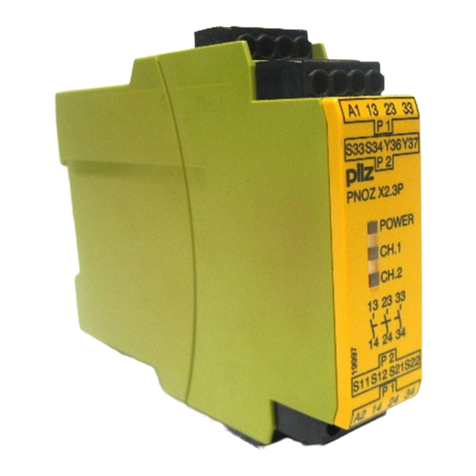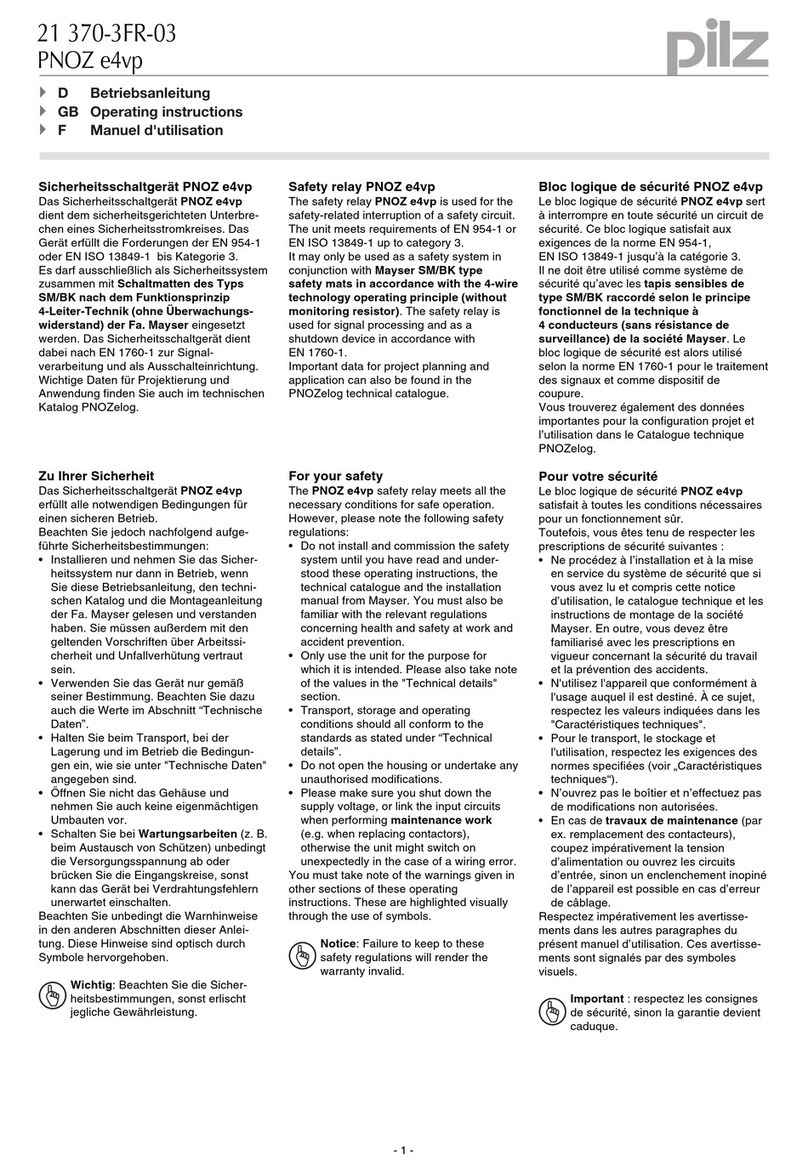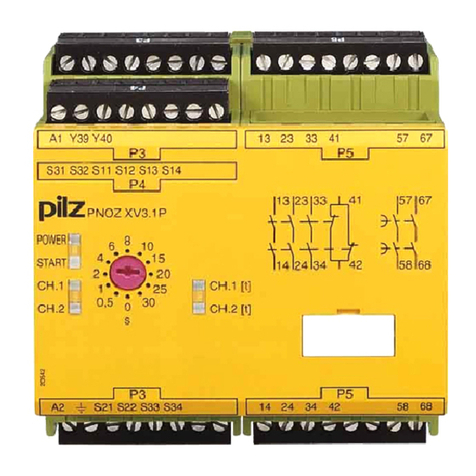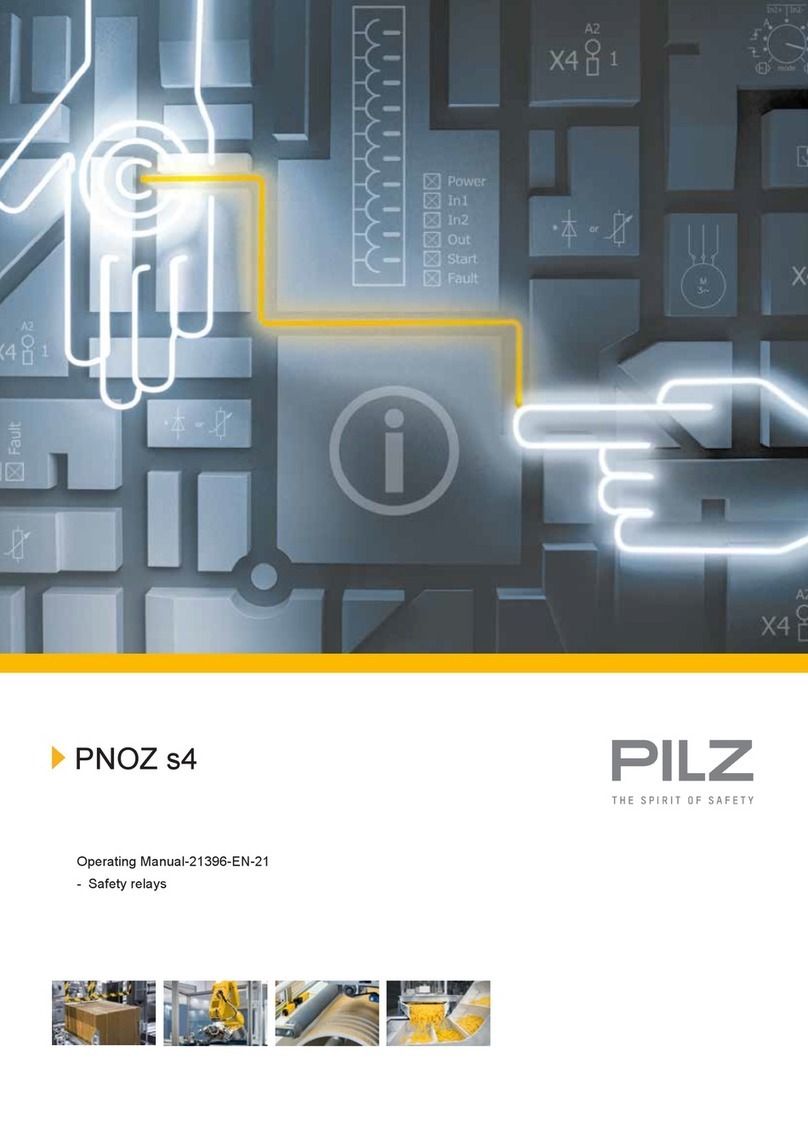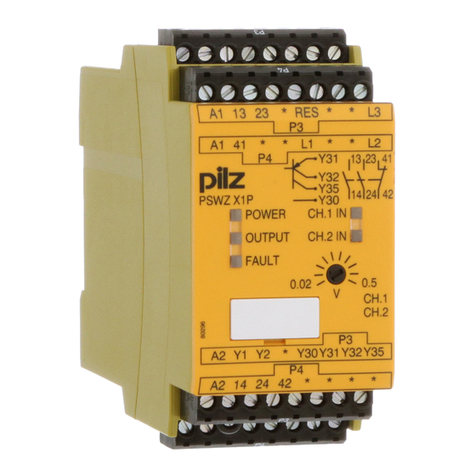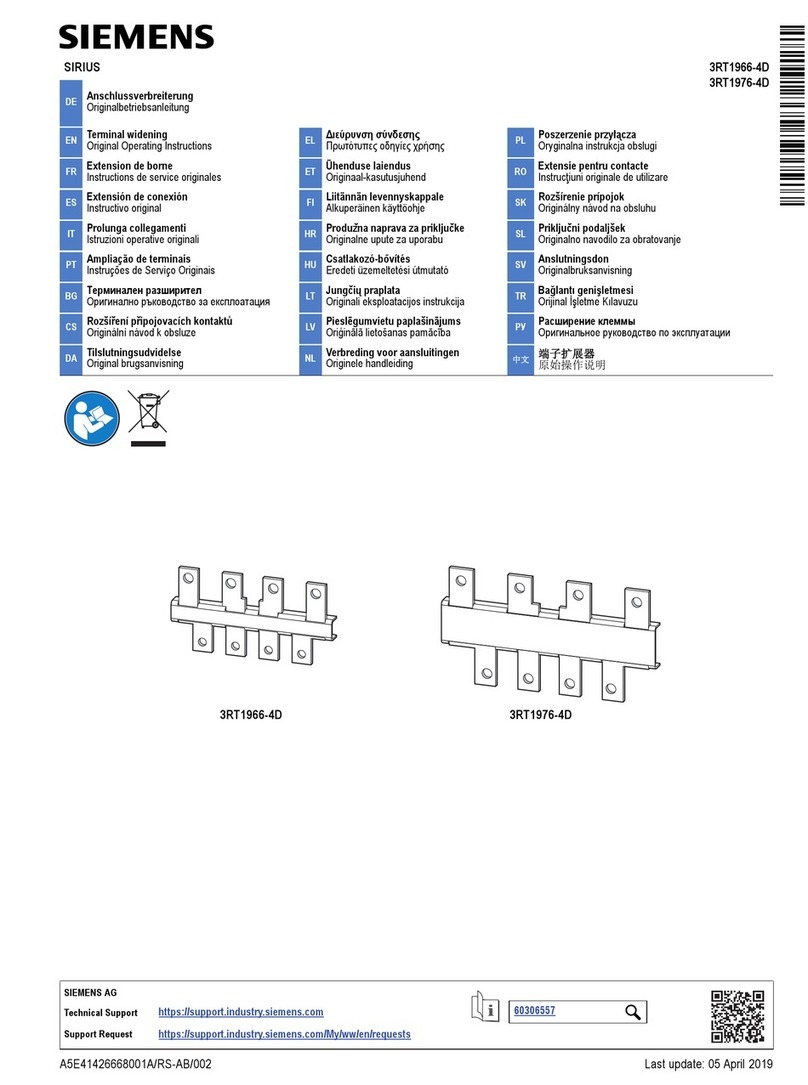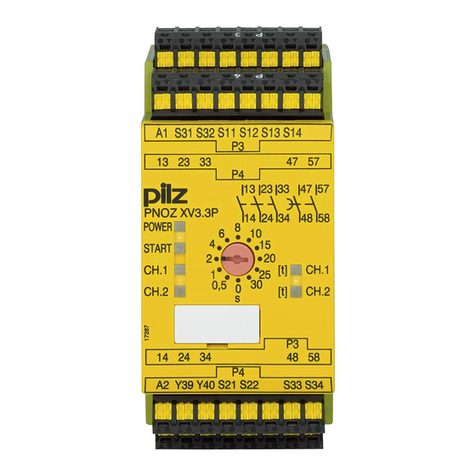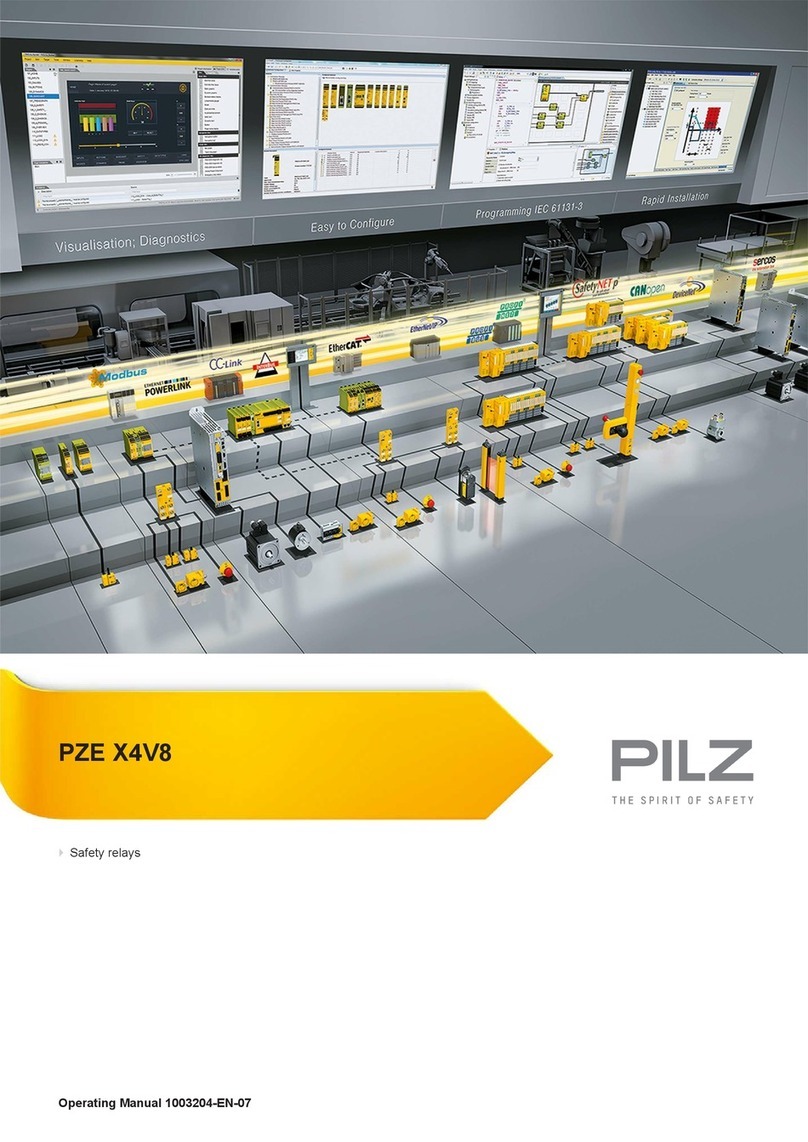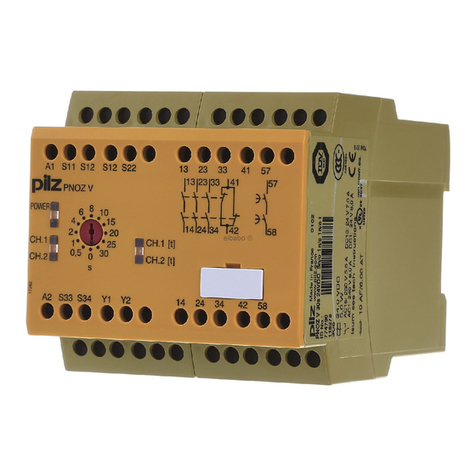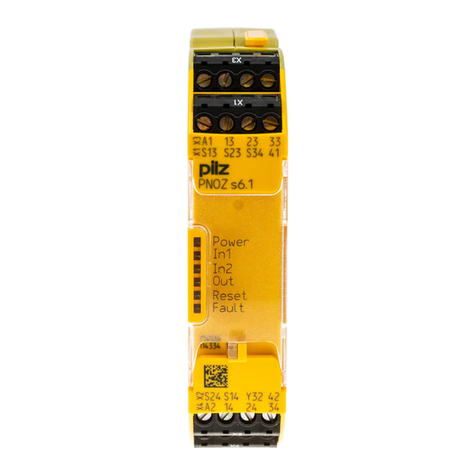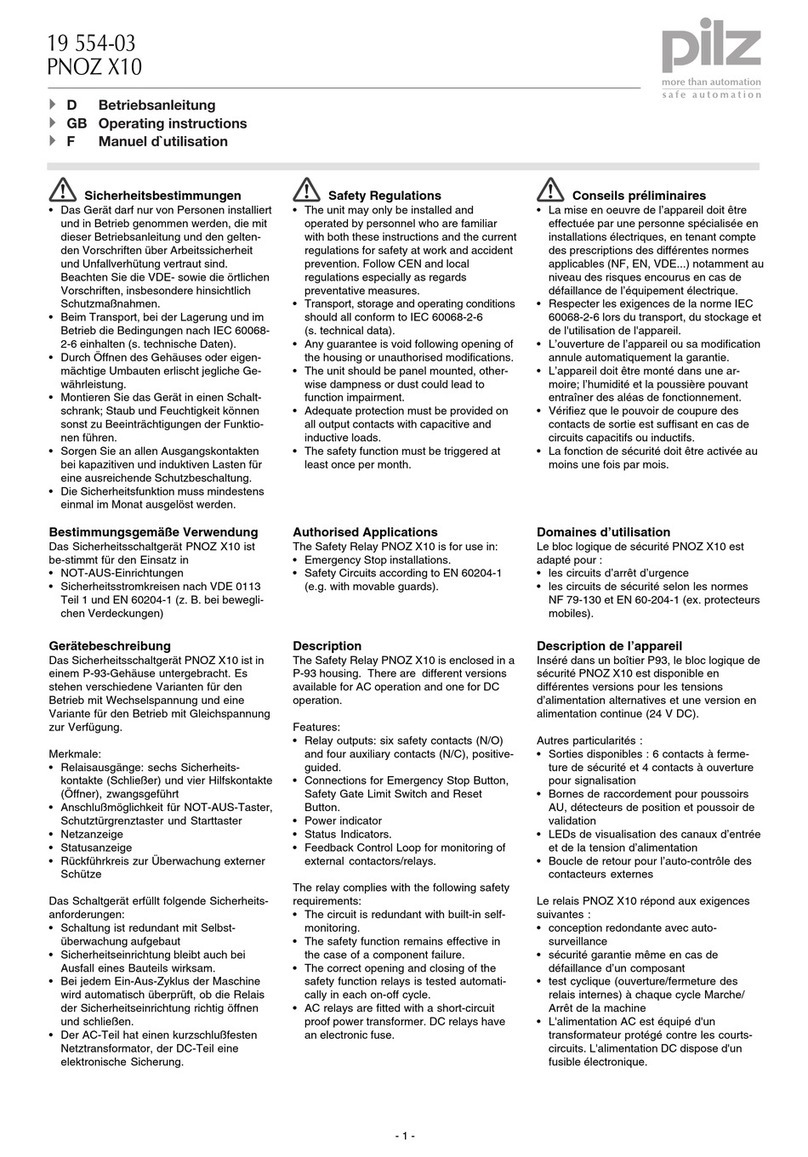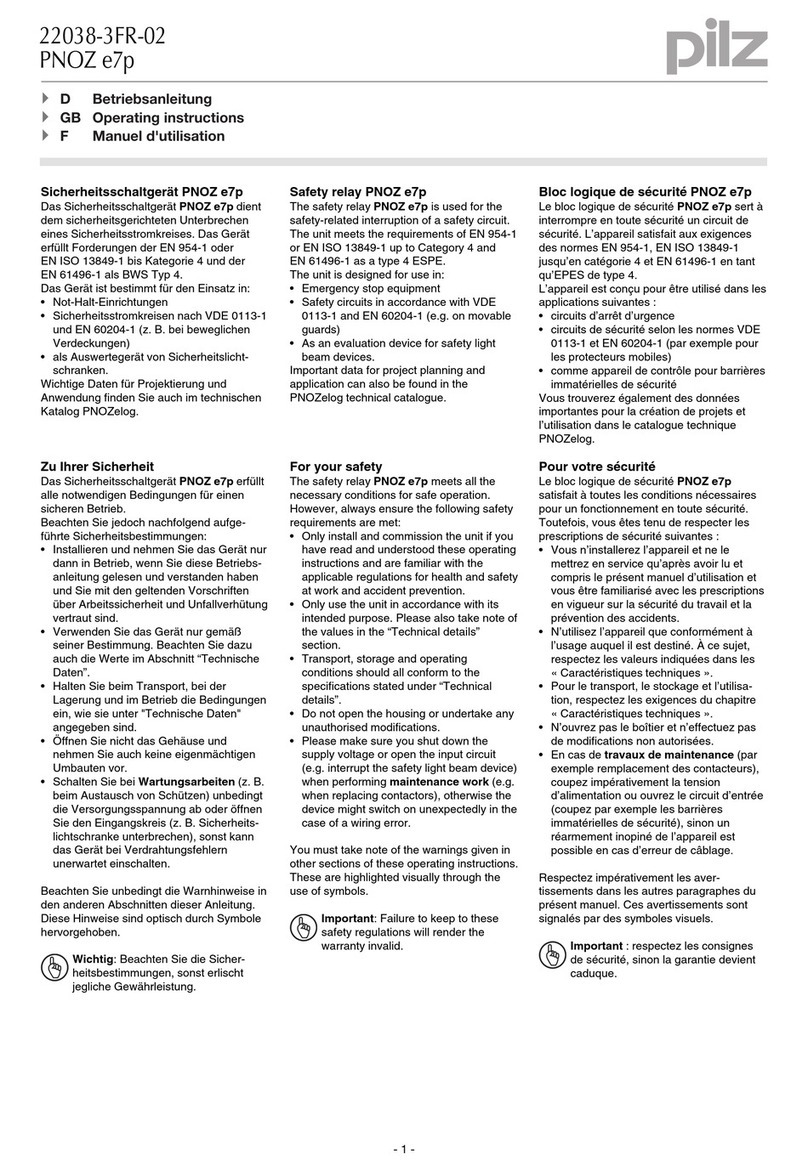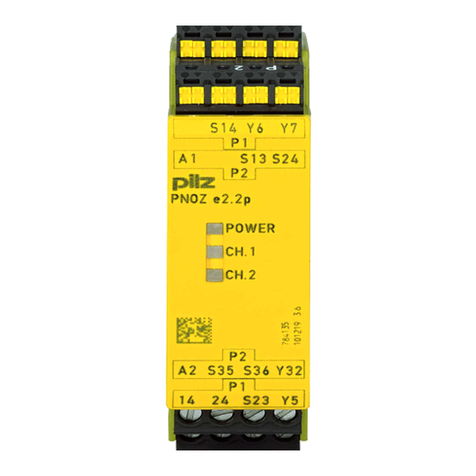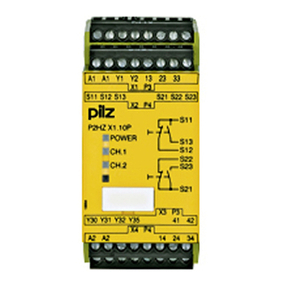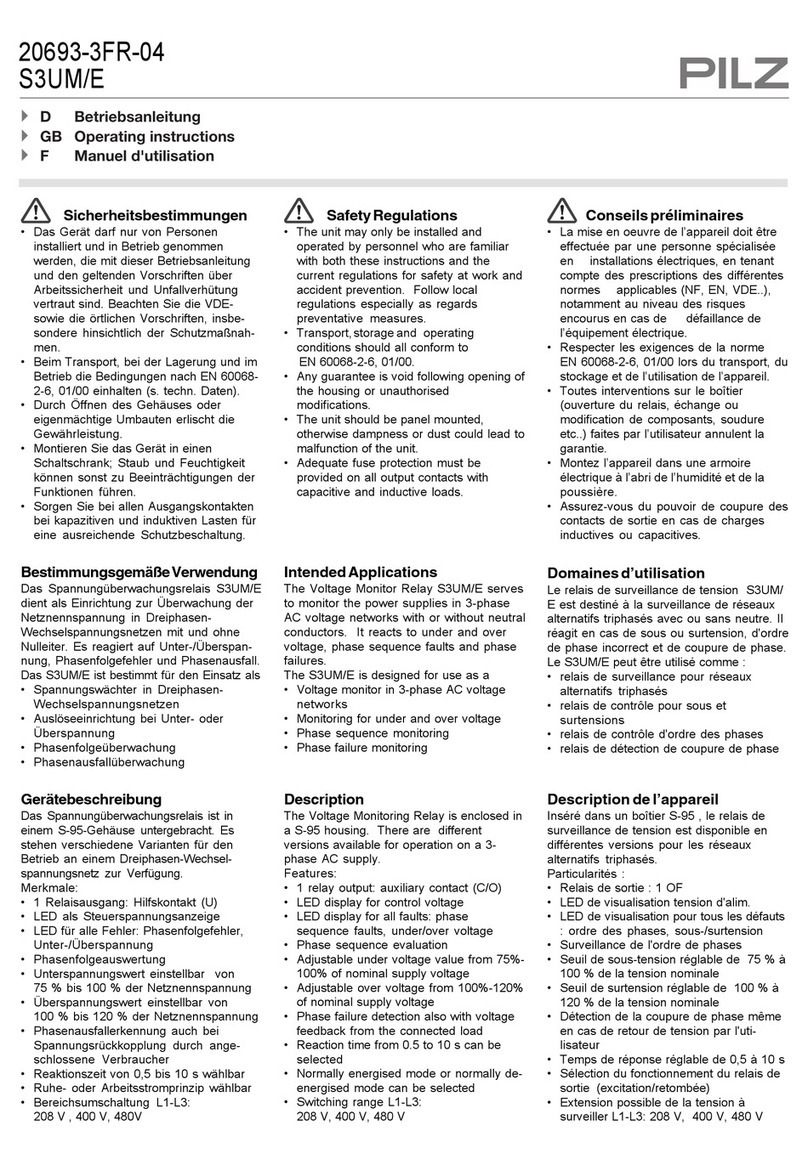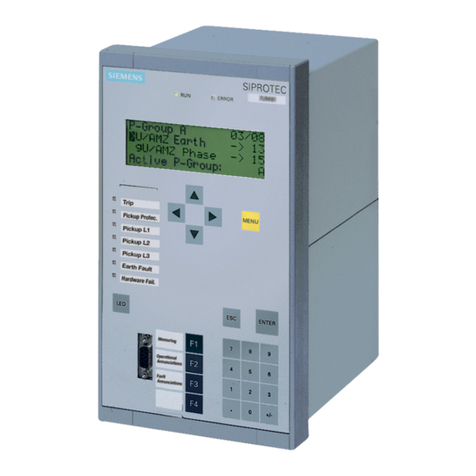
Content
Operating Manual PNOZ s30
1001715-EN-13 5
9.2.3.1 Permitted encoder types and output signals 74
9.2.3.2 Safety-related architecture 74
9.2.3.3 Achievable safety level 75
9.2.4 Safety-related characteristic data for operation with non-safety-related ro-
tary encoder with mechanical fault exclusion 75
9.2.4.1 Permitted encoder types and output signals 75
9.2.4.2 Safety-related architecture 75
9.2.4.3 Achievable safety level 76
9.2.5 Safety-related characteristic data for operation with non-safety-related ro-
tary encoder with diagnostics via the drive controller 76
9.2.5.1 Permitted encoder types and output signals 76
9.2.5.2 Requirements of the drive controller 76
9.2.5.3 Safety-related architecture 77
9.2.5.4 Achievable safety level 77
9.2.6 Safety-related characteristic data for operation with a safe rotary encoder 78
9.2.6.1 Permitted encoder types and output signals 78
9.2.6.2 Safety-related architecture 78
9.2.6.3 Achievable safety level 78
9.2.7 Safety-related characteristic data for operation with a safe rotary encoder
with Z index 79
9.2.7.1 Permitted encoder types and output signals 79
9.2.7.2 Safety-related architecture 79
9.2.7.3 Achievable safety level 80
9.2.8 Safety-related characteristic data for operation with non-safety-related ro-
tary encoder and proximity switch 80
9.2.8.1 Permitted encoder types and output signals 80
9.2.8.2 Safety-related architecture 81
9.2.8.3 Achievable safety level 81
9.2.9 Safety-related characteristic data for operation with 2 proximity switches 81
9.2.9.1 Permitted encoder types and output signals 81
9.2.9.2 Safety-related architecture 82
9.2.9.3 Achievable safety level 82
9.3 Examples 83
9.3.1 Connection of proximity switch 83
9.3.1.1 Features 83
9.3.1.2 Configuration overview 83
9.3.1.3 Connection 84
9.3.2 Incremental encoder connection 84
9.3.2.1 Features 84
9.3.2.2 Configuration overview 85
9.3.2.3 Connection 86
Section 10 Order reference 87


